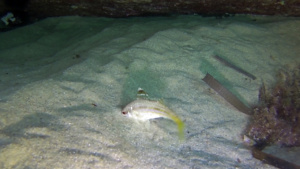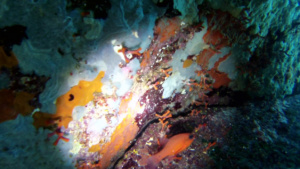Lobsters are increasingly rare. There are many reasons: a larval life that lasts about 20 years, overfishing, the change of one’s habitat due to the usual causes, warming of the waters, tropicalization of the Mediterranean Sea, etc. etc. In this isolated patch at about 52/54 meters deep we found them and some, as can be seen from the video, even large ones. Mediterranean lobster Palinurus elephas Aragosta mediterranea www.intotheblue.it. Mediterranean lobster Palinurus elephas Aragosta mediterranea www.intotheblue.it
These isolated patches, unknown to fishermen, represent real ecological niches. The Mediterranean lobster is a territorial species and if not disturbed and with the optimal conditions of its environment, it remains in the same area for a long time, avoiding migrating to other seabeds.
Palinurus elephas is a commonly caught species of spiny lobster from the East Atlantic Ocean and the Mediterranean Sea. Its common names include European spiny lobster, crayfish or cray (in Ireland), crawfish (in England), common spiny lobster, Mediterranean lobster and red lobster.
Distribution and habitat
Palinurus elephas is a common species of spiny lobster, found in the eastern Atlantic Ocean, from southern Norway to Morocco and the Azores, and in the Mediterranean Sea, except its eastern extremes. It lives on rocky exposed coasts below the intertidal zone, mainly at depths of 20 to 70 metres (66 to 230 ft). It is named after the ancient Roman Tyrrhenian sea port of Palinurus (modern day Palinuro, Campania, Italy) where they are found in abundance off its promontory.
Reproduction
The breeding season is in September and October, with the female brooding the reddish eggs. These eggs hatch about six months later in the spring as flattened, leaf-shaped, planktonic larvae (phyllosoma larvae).
https://en.wikipedia.org/wiki/Palinurus_elephas
 English
English Italiano
Italiano





